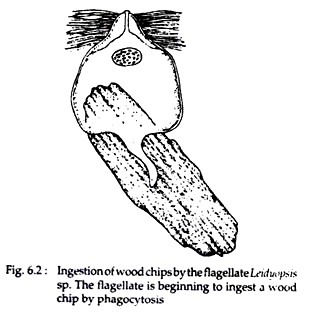In this article we will discuss about the examples of mutualism.
Mutualism refers to the relationship in which both partners are metabolically dependent on each other and both are benefitted from the association. Mutualism is usually obligatory and, in some cases, physiological dependence reach to such a degree that one mutual cannot survive without the other.
Examples of Mutualism:
(i) Termites and their intestinal protistan fauna are a good example of mutualism. The termites cannot synthesise cellulase and, thus, are unable to digest cellulose that form the main bulk of their food. The flagellates (e.g., Leidyopsi sp) living in termite’s intestine synthesise cellulase and consequently digest the wood eaten by the host.
ADVERTISEMENTS:
The termites use the molecules excreted as a byproduct of the flagellates’ metabolism. If the termites are defaunated by exposing them to high temperature or high oxygen concentration, which are toxic to the flagellates, then the termites die even though they continue to eat wood (Fig. 6.2).
(ii) The relationship between the wood-roach Crypto-cercus and its mutualistic flagellates involves more than the dietary story. Here the roach’s molting hormone ecdyson influences the sexual cycle of the flagellates.
(iii) The blood-sucking leeches cannot digest blood but their intestinal bacteria that are restricted to leech gut do the digestion for their hosts. From the above examples, it appears that an astonishing variety of mutualistic association can be found among animals, bacteria, fungi, algae and plants.
